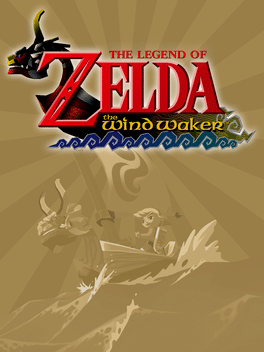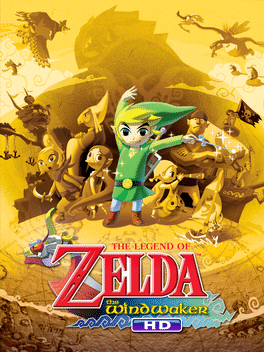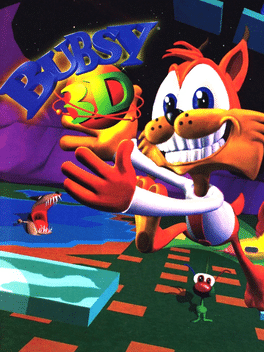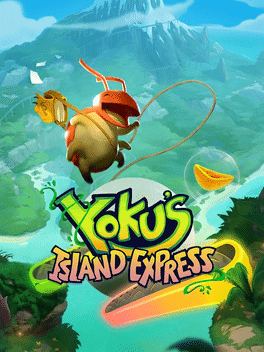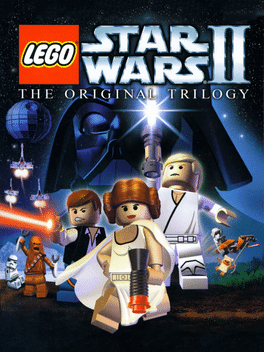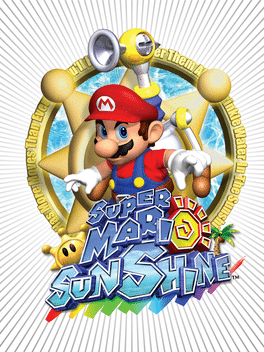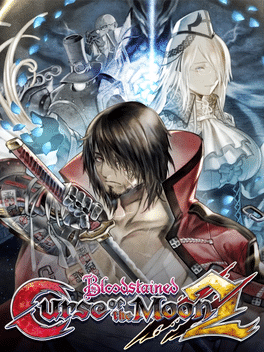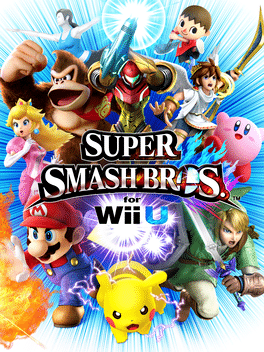(Originally published to Glitchwave on 9/28/2022)
{Image from igdb.com]
The Legend of Zelda: The Wind Waker
Developer: Nintendo
Publisher: Nintendo
Genre(s): Action-Adventure
Platforms: GCN
Release Date: December 13, 2002
The most glaring difference that initially upset Zelda fans was obviously the graphics. Everyone assumed this game's visuals would be different from the blocky polygons of Ocarina of Time. Still, no one expected the visuals that The Wind Waker presented. Cel-shaded graphics were not introduced in the sixth generation of gaming (see Mega Man Legends from 1997 for the earliest known example). Still, the superior graphical capabilities made the style more ubiquitous. One consistency with cel-shaded graphics is that they make any game more vivacious, sacrificing realism for stylistic pomp. Zelda fans were not keen on this artistic decision as they complained that the graphics made The Wind Waker look too puerile, diminishing the grandiose tone of the fantasy epic that Ocarina of Time conveyed down to a light-hearted Saturday morning cartoon. Since when was The Legend of Zelda synonymous with being dark and brooding? If anything, the warmer, brighter tones to Wind Waker’s aesthetic recall the more whimsical nature that Miyamoto attempted to exude for the very first Zelda game on the NES. Even without comparing it to previous titles, I can’t understand how someone couldn’t be enraptured by The Wind Waker’s aesthetic charm. All the colors of the Crayola box pop with the same amount of visual flair without one color bleeding into the others and making it an incohesive splatter painting. Everything from the green, rupee-filled grass to the rippling blue waves of the sea are so visually striking, and even the drabber colors that make up the island formations manage to be captivating. The colorful tone also persists, whether the atmosphere is jubilant or tense, showing a sense of consistency. The Wind Waker’s exuberant style demands your attention and is a visual splendor. To this day, The Wind Waker is still the most attractive Zelda game.
Higher visual fidelity has also made the denizens of Zelda’s world much more expressive, namely the series staple, tunic-wearing hero of time. Like many, if not all, of Nintendo’s mascots, Link is not a dynamic character. His leap into 3D made him more realized in a physical sense, but his warbled interjections were even less coherent than Mario’s. I suppose this is understandable because, unlike Mario, Link is not a pronounced, single character. With a few direct sequels as exceptions, the elfin Aryan boy in each game is not the same, just a different heroic avatar with the same name and sense of fashion. The Wind Waker’s Link is yet again a different iteration of Hyrule’s prodigal son, and his vocabulary has not transcended his neanderthal-like yelps and grunts. However, his varied facial expressions, thanks to the exultant visuals, make him more emotive, thus exuding more of a personality than usual. Whether it be feelings of joy, fear, shock, disgust, etc., Link wears every emotion on his sleeve, expressed through his round, cherubic face.
Link also probably seems more personable here because his character gets more exposition. Instead of immediately being summoned to action after someone discovers he’s the chosen hero, the player experiences his roots for a little longer. Little Link lives a humble existence on Outset Island on the southside of the sea with his younger sister Aryll and his grandmother. His grandmother only puts the iconic green tunic on him for his eleventh birthday because she’s a traditional woman who enjoys the customs of the old world. Little does she know, the green tunic fits her grandson better than she thinks. However, Link’s epic quest to earn the right to wear that tunic is not the usual mission involving the Triforce or the other two people who possess two-thirds of it. Link’s sister Aryll gets captured by a giant bird who drags her off to the Alcatrazz-like Forsaken Fortress across the map. The bird mistook her for another young girl named Tetra, a pirate captain whose crew coincidently anchored offshore from Link’s home. Together with Tetra and her swabbies, Link sets far off to rescue his sister from the gripping talons of the massive bird. Unfortunately, being underprepared, Link fails the prison break operation on his first attempt. With the aid of a talking red boat referred to as “The King of Red Lions,” Link prepares more thoroughly by directing towards finding the three pearls that will unveil a power to defeat the bird and its master, Ganondorf. As unusual as Wind Waker seems, the plot's offbeat premise quickly crawls back to something that reminds us that it’s back to the old Zelda grind after Majora’s Mask. Nintendo isn’t eager to step out of their narrative comfort zones, and the Zelda series is as guilty of formulaic stories as the Mario series. The smidge of deviation presented here in the typical Zelda premise at least makes enough effort to offer something relatively interesting.
What is most interesting about The Wind Waker is the fantastical world that Link resides in. The people who reside on these islands seem familiar with Hyrulian customs, but the last time I checked, Lake Hylia’s dam did not collapse and flood Hyrule, for it never had one in the first place. For the first time since Zelda II on the NES, a mainline Zelda game takes place after the events of the first game in the asinine Zelda timeline, and it's a new age for the franchise. The Wind Waker is set hundreds of years after the events of any Zelda title. The kingdom of Hyrule was evidently destroyed in a biblical deluge that would capsize Noah along with his arc. In the wake of this apocalyptic scene, Hyrule has been reduced to a chain of islands situated in an ocean that stretches out to what seems like an eternity. Familiar enemies present in previous Zelda games have been subject to a redesign, evolving for these dire circumstances like a Darwinist case study. The Buzz Blobs from A Link to the Past and the ChuChus from Majora’s Mask have fused into an electrifying creature that runs the gamut of the whole rainbow. Peahats now make a pitiful, squeaky cry when they die like curb stomping a dog’s chew toy. Moblins look like they live off the shores of Haiti and the Poes and Redeads look like they spent plenty of time in the sun before they died. Zoras and Kokiris have been wiped out, and the Gorons are now as rare as unicorns. However, two of three of the focal races of the N64 Zeldas have now adapted to fit this climate. The Kokiri are now dendriform dwarves called Koroks and Zoras are now the avian-human hybrid Rutos. Yes, the fish-like Zoras are now bird people in a land almost entirely by water. Try to make some sense of that! As for Link, he seems to prove much worse in a watery world like this. Wind Waker Link cannot swim underwater like his uncanny ancestors, for the developers did not want him to leisurely swim through the vast waters to his destination, like the bridge between Lake Hylia and Zora’s Domain. Instead, Link will doggy-paddle with his head slightly above the water until he gurgles and the breathing gauge depletes. Link is confined to the surface of the water, with the nebulous depth of it expanding the breadth of the location.
Link’s intended traversal method is sailing via his crimson, bearded boat. It’s only the most natural method of traveling through a large body of water. After acquiring the sail on Windfall Island, the player assigns it to one of three buttons on the Gamecube controller and keeps it on the base of the KRL boat to accelerate with the wind. The game's map isn’t as large as it might seem, but the widespread length of the open waters compared to the sparse ratio of land in between makes it seem overwhelmingly immeasurable. Those who bothered to play The Wind Waker after their initial upset often had new grievances about the game’s sailing mechanic. Because the land on the map is scant, all notable areas are an arduous hike (or swim in this context) away from one another. Sailing according to the wind’s direction will move Link’s boat around 10-15 MPH, so arriving at one area from across the map will take approximately 10-15 minutes in real time. If that already sounds like a slog, the vacuous nature of the open waters also connotes that nothing will interrupt the trip except a few sharks and Octorok attacks. Many people have criticized The Wind Waker's oceanic hub as a boring, glacial waiting game, but I think it’s magnificent. Maybe it’s my romantic side talking, but the KRL boat rippling through the deep, blue ocean waves with Link’s green cap waving in the wind is a grand, majestic scene. The magnitude of the sea, coupled with the triumphant musical track that accompanies Link as he sails, exudes the epic scope of adventure better than any other Zelda game. It’s like the jubilant feeling of the first time Link steps out of the Kokiri Forest to Hyrule Field in Ocarina of Time but extended for the entire game. The monumental scope of adventure is never lost on the player when sailing on the Great Sea, even though I did take full advantage of the unlocked teleportation option for convenience.
The Great Sea also makes exploration much more engaging than any other Zelda title. In the previous games, the player had to search every nook and cranny in Hyrule to find any special items, for there is a leveled depth to excavation on land with plenty of ground to obscure an object from sight. Except for sunken treasure whose relative position glimmers from beneath the sea floor, the vacancy of the wide, open sea gives the illusion that there is nothing underneath the water. If the waters are so empty, then surely the player can assume that any slab of land in the midst of it is comparatively sumptuous. Every island in the Great Sea can be conspicuously seen from miles away, alluding to at least something potentially notable. In between the island civilizations across the entire map lie several isles with something to catch the player’s interest. These assorted atolls and cays might be distracting on the way to the main goal, but isn’t that the beauty of exploration? With the map's perimeter covered almost entirely by sprawling waters, any land mass in it is like a point of respite. Usually, some point of interest will net the player a reward for dropping their proverbial anchor on the shores of any of these small isles. I always felt more invited to explore the Great Sea than Hyrule or Termina because the juxtaposition between land and sea made exploration simpler. That, and the open parameters of the sea exude a sense of freedom that hasn’t been felt since the first Zelda on the NES.
The tool used to traverse the waters is the game's namesake: the wind waker. Although it sounds like the name fitting for a weapon of mass destruction, it is this game’s instrument item like the ocarina before it. However, the wind waker is only an instrument in an abstract sense of the word. It’s a glittery silver baton that does not produce any sound itself but conducts the rustling wind as if its continual blustering is a sustained single note made to be manipulated. Songs on the Wind Waker can be performed in either 3/4, 4/4, or 6/4 with a bouncing metronome at the top to competently play the conductor role. The few notes confined to certain movements on the C stick may seem relatively restrained compared to the free-reign flexibility of the key-shifting ocarina. Still, no other musical apparatus seems appropriate for control like a baton. Control seems to be what the wind waker revels in. The ocarina used music as a key to unlock the secrets of Hyrule, but the wind waker allowed Link to become the supreme master of the Great Sea’s most powerful element. Songs in 6/4 are long and similar to the temple songs from the two previous 3D Zelda games, but as Link is now a conductor, playing them in the temples is a collaborative effort. Songs in 4/4 include the power to teleport to a few specific locations on the map and to control some characters, almost like hypnosis. One song in 3/4 is the Wind Waker’s rendition of the “Song of Time,” but the other 3/4 song, “Wind’s Requiem,” is the most essential song to conduct and the earliest that Link can play. Simply put, playing it conducts the wind to blow in whichever cardinal direction. Link can use for platforming challenges involving the leaf item, but it will mostly be used to change directions while sailing.
Conducting the wind, while I question the logistics of it at times when Link is underground or in a temple, is an interesting way of deviating from the ocarina with the same type of item. However, it gets irritating how frequently the Wind Waker must be used throughout the game. Link only needed the ocarina for select moments in both the N64 Zeldas, but the wind is ostensibly a beast that is a challenge to tame. Keep in mind that the KRL boat’s maximum speed is about 10-15 MPH with direct cooperation with the wind, displayed by a translucent arrow on the back of the ship. The boat’s speed will decline significantly if Link deviates slightly from the wind's trajectory. Charging in the opposite direction of the wind will make the boat come to a screeching halt. There are eight cardinal directions to choose from after playing the “Wind’s Requiem” for a reason, and the game expects the player to commit to one. Forget attempting to circle around an island without having to redirect yourself every few paces. The constant re-correction is maddening.
Inventory maintenance takes a step down in The Wind Waker compared to the previous two 3D Zeldas. Zelda staples like bombs, arrows, and the boomerang return, along with a few new additions like the paraglider leaf. The hammer from A Link to the Past returns, and the young cartoon Link here must be eating his spinach because he can carry the Adult Link items from Ocarina of Time like the iron boots and Hookshot with no strain. It isn’t the number of items that is overwhelming, nor is it the way these items are organized on the menu. Rather, it’s the constant rearrangement of items between the three assigned buttons on the controller, especially while sailing. Cycling through Link’s inventory would be a common affair in the previous 3D Zeldas that could sometimes be irksome, the same as on land in The Wind Waker. However, the items present some odd confinements of being out at sea. I’ve expressed before that the wind must constantly be managed, and not having the sail equipped makes the act of sailing futile, so two out of three buttons will be solidified as those particular items at all times. The last button of the three will juggle several items in Link’s inventory. Items like the boomerang and arrows can be used by Link while the boat is moving, but the KRL boat has fashioned other items as part of its own arsenal. Bombs will be shot and launched from a cannon while the grappling hook becomes a crane used to lob up sunken treasures. Unfortunately, on top of the constant pausing, the roulette of items for the other button breaks the pacing of the already leisurely speed of sailing. Attacks from various things in the water happen frequently but can simply be bypassed without difficulty. Humoring the sea enemies by stopping will usually result in conflict between the sail and the direction of the wind. Anything the player has to do on the water that involves halting their momentum, except for docking the boat on an island, causes too much friction.
Combat seems to be emphasized higher in The Wind Waker than in any Zelda game before it. One console generation was all it took for people to get comfortable with 3D combat, and now Link is a green, pint-sized gladiator. Z-targeting has shifted to L-targeting on a Gamecube controller, and the developers felt like the series has graduated from having a fairy partner to highlight enemies. The King of Red Lions does enough as it is. As one can tell from Link’s sword training on his home of Outset, his array of moves has not shifted. Rather, he’s improved his dexterity with his weapon. Link's newfound nimbleness allows him to not only slash his sword more quickly but counter the enemy's moves with something else other than his shield. While facing an enemy, the A button flashes, and Link performs a stunt where he rolls in a circular motion, slashes from the back, or leaps over the enemy’s head and whacks them from above. Enemies in The Wind Waker seem to roll up on Link in packs, or at least more so than the enemies did in the N64 Zeldas. More durable enemies like Moblins and the mini-boss-like Darknuts are more common and serve as the juggernauts in the mix. These congested enemy swarms are most likely to challenge the more dexterous Link, but it reminds me that The Legend of Zelda is not a series whose strong suit is combat. The combat in each Zelda title, including The Wind Waker, has been competent, but enemies are only intended to serve as a puzzle or a slight obstacle. Disposing enemies is far too easy because the games, especially The Wind Waker, are too lenient with error. An army of enemies isn’t all that imposing when all the damage they can muster barely depletes one health container. The only combat challenge I ever found was fighting a cluster of Darknuts, only because their compact closeness made it hard to poke at their weak points with a counter. I don’t expect Zelda to be like Dark Souls, but the developers shouldn’t have pussyfooted with the combat considering they made a greater effort to emphasize it.
The Wind Waker is also paced strangely. Except for Majora’s Mask, A Link to the Past established a formula for progression that maintained prominence in Ocarina of Time: three elementary dungeons to uncover three of the same kind of jewel, a midpoint rising action, several “adult” dungeons that are more challenging, and finally a climax in Ganon’s fortress. The Wind Waker can’t decide whether or not to stick with this structure or mark its own path like Majora’s Mask. From the start, the first Forsaken Fortress “dungeon” is essentially a farce. The first dungeon of a Zelda game serves as a glorified tutorial to slowly attune themselves to the basic layout of the dungeons. If Forsaken Fortress is intended to retain this, it’s a terrible first dungeon. Stealth is seldom an aspect of the Zelda series, and in the few sections where stealth is applicable, it’s usually well into the game when the player is well acclimated with it. Forsaken Fortress is an inappropriate precedent for the rest of the game. The remainder of Wind Waker’s first half seems loyal to the Zelda formula. The spiritual stones from Ocarina of Time have been refashioned like everything else in this game as “Goddess Pearls,” Link must collect three of them scattered across the sea to unlock the temple where the Master Sword is placed. One would assume three dungeons coincide with the pearls, and the first two fulfill those expectations. However, the quest for the last pearl is an anticlimactic trek back to Outset Island, where a mystical fish simply gives the player the last pearl. The Tower of the Gods, the immaculate temple unsurfaced by the three pearl’s collective power, is a satisfyingly lengthy real dungeon. Still, it already feels like a midway point because the early objective of retrieving the pearls has already been completed. Cruising back to Forsaken Fortress with not only the Master Sword but a pack full of other items to rescue Aryll again is incredibly satisfying. The player was once so naked and defenseless here, but now they get to revel in smashing Hemlock’s head in with the skull hammer like a watermelon. However, it’s a shame that the game never reaches a climax as exhilarating as this, and it’s only at the rather prolonged halfway point.
After the resolution of the Aryll arc, The Wind Waker decides to commit to the franchise's tried and true story of the Triforce and the three prophetic figures involved. It’s revealed that Hyrule was not demolished but is being hidden underneath the water from Ganondorf as a means of protection. The kingdom has been kept in a state of purity like a cryogenic chamber, and Link must defeat Ganon so Hyrule can resurface. Link was a given for the player even before he knew his destiny, and the King of Red Lions mentions that Hemlock’s master is Ganondorf, but what about the princess of the series namesake? Unfortunately, the game goes about revealing Zelda in the worst way possible. The Wind Waker’s quainter graphics give more personality to Link and to every other character as well, old and new. My favorite new character in The Wind Waker is Tetra, the pirate gang leader who has been collaborating with Link to save his sister. She’s a tough, snarky lass full of piss and vinegar, the kind of girl who would drink any man under the table, except she's only eleven. After Ganondorf unveils Tetra’s identity, swimming down to Hyrule’s perpetual state of glory affirms Ganodorf’s suspicions as Tetra transforms into a cel-shaded Zelda. All her spunk is gone when she does this, making me realize that Zelda is like a dry sponge. At least Princess Peach has that airheaded bimbo aura going for her. Keeping to Zelda traditions has ruined one of the franchise's best characters. As for the reveal of the Hyrulian King being my boat, I was neither surprised nor moved in the slightest.
The game's second half continues to emulate a traditional Zelda plot structure. As most of the dungeons in the second half of Ocarina of Time are “adult” versions of their past counterparts, the same can be said about the pairing of dungeons in the Wind Waker. Both pairings, however, are not centered around an elemental theme but around two characters from two different Great Sea tribes. Medli is a Ruto girl whose presence is heavy on Dragon Roost Island when Link uncovers the source of the great Valoo’s distress, and Makar is a stubby little Korok who Link retrieves from the dankest pits of the Forbidden Woods. Link discovers that both of them are estranged Zora and Kokiri sages who have the power to replenish the Master Sword’s power. They also play the harp and violin, respectively, so Link takes his conductor role literally and figuratively to accompany both sages in these temples. Fear not, for these dungeons do not fall under the category of dreaded escort missions. Neglecting Medli and Makar will not result in a failure, but Link must use the “command melody” for their constant collaboration. It’s an inventive way to spice up the typical Zelda dungeon, but only to some extent. Overall, the few dungeons that Wind Waker has are merely adequate. I like the Water-Temple-esque design of the Wind Temple, but nothing else about any other dungeon really stands out compared to the previous games.
That being said, I’d much rather endure even the most mediocre Zelda dungeon compared to the absolute drudgery the developers came up with after the Earth and Wind temples. Unlocking the Triforce pieces in previous games was directly tied with beating the dungeons, so the player never gave them much thought besides the ultimate Zelda Macguffin. To replace what would be the third dungeon in any other game, the developers thought it would be fun for the player to set off and scope out eight individual triforce pieces all over the Great Sea and the charts that reveal their locations. It sounds like a grand pirate adventure, fitting for the game’s prevalent theme of sailing out at sea. Sounds like fun, doesn’t it? It isn’t. At all. I know a fetch quest when I see one, Nintendo, and you can’t mask it with the allure of pirates. Surveying the entire sea with little direction just to find the charts in bland mini-dungeons hidden in opaque corners of the map results in the most grueling, tedious, and cumbersome section throughout the entire series. To add insult to injury, Link can’t even decipher the charts when he finds them. Remember Tingle from Majora’s Mask? The map guy hoisted in the air via a red balloon who had a serious case of arrested development? Out of all the characters, it had to be this creepy little fucker to survive the cataclysmic washing of Hyrule. Tingle has reinvented himself as the Great Sea’s ultimate shyster, taking advantage of apocalypse inflation and charging 398 rupees per chart. If my math is correct, that’s 3,184 rupees, more than quadrupling the total amount of rupees Link can hold in Ocarina of Time. Tingle adds a layer of grinding already enervating fetch quest, and I wish I had the option to leave him in his cell to starve to death. I abhor this section of the game, and Nintendo owes everyone an apology.
After finally completing the arduous fetch quest and forgetting everything else in The Wind Waker up to that point, Link descends back into Hyrule to face Ganondorf in his quarters. Again, The Wind Waker’s Ganon’s Tower takes a note from the previous two 3D Zeldas. Multiple rooms with various items or dungeon-themed challenges are presented and can be completed in any order. Four bosses from the previous dungeons are at the end of their respective sections, and then Link fights Phantom Ganon in a maze-like section. It’s here in The Wind Waker when this collective of tropes and elements from previous sections in the final part of the game grew tiresome. The challenges here are brief and substandard compared to the ones in Ocarina of Time, and the bosses, upon repeat, can be defeated in less than a minute with the Master Sword. I enjoy the added narrative with Ganondorf’s final boss here, and the team effort to defeat him with Zelda harkens wonderfully back to the collaborative tasks with Medli and Makar. However, I still can’t help but feel underwhelmed. Perhaps this is because Nintendo Power described Link’s final blow to the head as “shocking,” but isn’t that exactly how Link defeated him in Ocarina of Time? What was more shocking was encountering Puppet Ganon, the boss before Ganondorf. The mirage of the Dark, Gerudian King expanding into a monstrous form in the spacious, ominously-lit room affected me much more. That, and the Puppet Ganon boss assuages that challenge I had been yearning for, resulting in the winner for the best boss in the game. I suppose I can be glad that the finale results in Zelda transforming back into Tetra as she sails with Link to colonize Hyrule in a new space rather than resurfacing the old one. The themes of nostalgia from Ocarina of Time are overt, but I am still satisfied with how The Wind Waker portrayed them and with this resolution.
The Legend of Zelda: The Wind Waker did not affirm everyone’s disappointments after the initial upset it caused. It’s an exemplary addition to the Zelda series, but I feel as if the game is always a bridesmaid and never a bride. It’s consistently listed as one of the greatest Zelda games but never takes the top spot either in a publication or anyone's personal favorite. Hell, The Wind Waker is seldom crowned as the best game on the Gamecube. The Wind Waker is my fourth favorite Zelda game behind three other 3D titles, and Ocarina of Time is one of them, as much as I hate to admit it. Wind Waker’s problem is that it can't decide what Zelda experience it wants to be. Like Majora’s Mask, it’s quirky and unconventional, offering something fresh and daring. All the while, it still suckles at the teat of the conventional Zelda tropes and arc of Ocarina of Time. The ending result is an awkward mishmash of some of the absolute best qualities seen in the series and some of the absolute worst. I wish Wind Waker committed to being unorthodox because the unusual aspects are where the game shines like the sun on the surface of the Great Sea. However, I am still not giving clemency to the early Wind Waker naysayers who would not give this game a chance from the get-go. The positives are so ubiquitous that they (almost) dilute the less-than-savory ones, and its unmistakable charm is certainly one of them.
